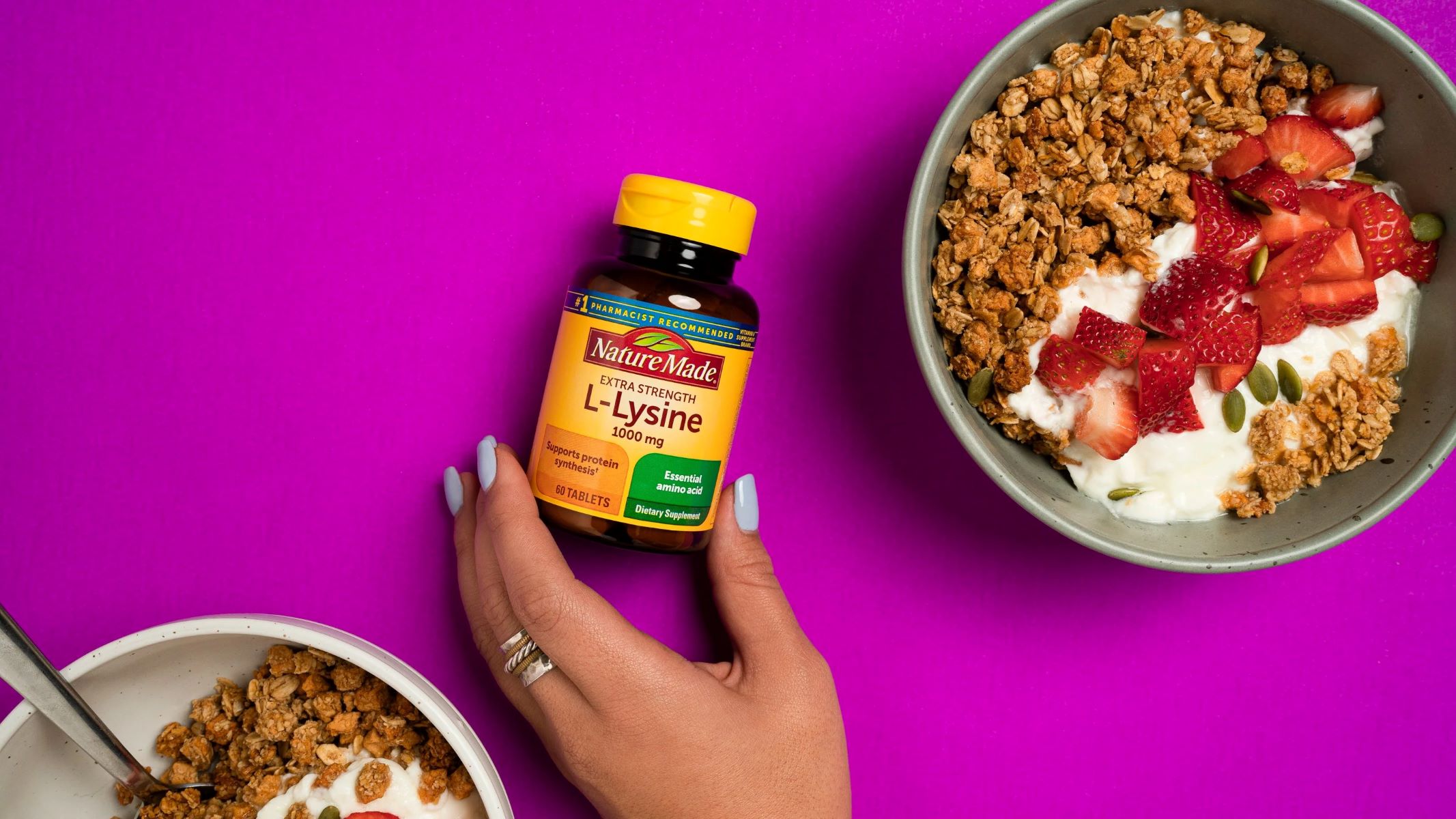

Featured
How To Increase Stamina By Exercise
Published: September 29, 2023
Learn the most effective exercises to increase stamina and boost your endurance. Get featured workouts and expert tips to enhance your overall fitness levels.
Introduction
Welcome to this comprehensive guide on how to increase stamina through exercise. Whether you’re an athlete looking to improve your performance, or simply someone wanting to increase your endurance in daily activities, incorporating regular exercise into your routine can have a significant impact on your stamina levels.
Stamina can be defined as the ability to sustain physical or mental effort for long periods. It plays a crucial role in various aspects of life, from completing a tough workout to staying focused and productive throughout the day. By engaging in specific exercises and following a balanced approach, you can enhance your stamina and achieve peak performance in various areas of your life.
Exercise has numerous benefits beyond just physical fitness, and stamina improvement is one of them. Regular physical activity increases cardiovascular health, strengthens muscles, improves lung capacity, boosts metabolism, and enhances overall endurance.
This guide will delve into different types of exercises that can help increase your stamina. These exercises include cardiovascular exercises, high-intensity interval training (HIIT), strength training, endurance training, and flexibility exercises. We will also explore dietary tips to support your stamina goals, as well as provide advice on consistency, progression, and safety precautions during exercise.
Whether you’re a beginner starting from scratch, or someone who is already active but wants to take your stamina to the next level, this guide will provide you with actionable tips and techniques to help you achieve your goals. So, let’s get started on the journey to improving your stamina and unleashing your full potential!
Benefits of Exercise for Stamina
Regular exercise offers a multitude of benefits for improving stamina. Let’s take a closer look at some of the key advantages:
1. Increased Endurance: Engaging in exercise on a regular basis helps to boost your cardiovascular health. It strengthens your heart, increases blood flow, and improves the efficiency of oxygen delivery to the muscles. This, in turn, enhances your endurance and allows you to engage in physical activities for longer durations without feeling fatigued.
2. Improved Energy Levels: Exercise stimulates the release of endorphins, which are known as the “feel-good” hormones. These hormones not only uplift your mood but also boost your energy levels. Regular physical activity can help combat fatigue and keep you energized throughout the day.
3. Enhanced Mental Stamina: Exercise not only benefits your physical stamina but also your mental stamina. Regular workouts have been linked to improved cognitive function, enhanced focus, and increased mental clarity. This is particularly helpful in tasks that require prolonged concentration or mental effort.
4. Weight Management: Maintaining a healthy weight is essential for overall stamina. Exercise helps to burn calories, build lean muscle mass, and increase metabolism. By incorporating regular exercise into your routine, you can effectively manage your weight, which in turn enhances your stamina and physical performance.
5. Stress Reduction: Exercise is a great stress reliever as it helps to reduce the levels of stress hormones, such as cortisol, in the body. High-stress levels can significantly impact your stamina and overall well-being. Engaging in activities like running, yoga, or any form of exercise that you enjoy can help alleviate stress and improve your stamina.
6. Improved Sleep Quality: Regular exercise promotes better sleep quality, which is crucial for rejuvenating your body and enhancing stamina. When you get enough restful sleep, your body recovers and repairs itself, allowing you to perform at your best during waking hours.
7. Enhanced Overall Fitness: Exercise has a positive impact on your overall fitness levels. It improves your muscular strength, flexibility, and cardiovascular capacity. By engaging in a variety of exercises, you can achieve a well-rounded fitness level and elevate your stamina in all aspects of physical activity.
Remember, consistency is key when it comes to reaping the benefits of exercise for stamina improvement. It’s important to incorporate a balanced exercise routine into your lifestyle and gradually increase the intensity and duration of your workouts. By doing so, you’ll be able to unlock the full potential of your body, boost your stamina, and achieve your fitness goals.
Types of Exercises for Increasing Stamina
There are several types of exercises that can effectively boost your stamina. Incorporating a combination of these exercises into your routine will help you build endurance and improve your overall fitness. Here are some key types of exercises for increasing stamina:
1. Cardiovascular Exercises: Cardiovascular exercises, also known as aerobic exercises, are designed to elevate your heart rate and increase oxygen consumption. Examples of cardiovascular exercises include running, cycling, swimming, brisk walking, dancing, and rowing. These exercises work your heart and lungs, improving their efficiency and boosting your stamina over time.
2. High-Intensity Interval Training (HIIT): HIIT involves alternating bursts of intense exercise with short recovery periods. This form of exercise helps improve cardiovascular fitness and build endurance efficiently. HIIT workouts typically include exercises like sprinting, jumping jacks, burpees, or kettlebell swings. The intense bursts push your stamina limits, allowing you to gradually increase your overall endurance capacity.
3. Strength Training: While commonly associated with building muscle mass, strength training also plays a significant role in improving stamina. By working on your muscles, you enhance their strength and endurance, allowing you to perform physical activities for longer periods without experiencing fatigue. Include exercises like weightlifting, bodyweight exercises, resistance band workouts, or yoga poses that focus on building strength in various muscle groups.
4. Endurance Training: Endurance training specifically targets increasing the body’s capability to sustain prolonged physical activity. This type of training improves your stamina and aerobic capacity, allowing you to engage in activities like long-distance running, cycling, or hiking for extended durations. Gradually increasing the duration and intensity of these activities will progressively enhance your stamina.
5. Flexibility Exercises: Flexibility exercises are often overlooked when it comes to increasing stamina, but they play a crucial role in overall fitness. Incorporating stretching exercises, yoga, or Pilates into your routine helps improve muscle elasticity and joint mobility, preventing muscle fatigue and reducing the risk of injury. By maintaining good flexibility, you can perform exercises more efficiently and for longer periods, ultimately enhancing your stamina.
Remember to choose exercises that you enjoy and that align with your fitness goals. Aim for a combination of cardiovascular exercises, high-intensity intervals, strength training, endurance training, and flexibility exercises to ensure a comprehensive approach to improving your stamina. As with any exercise program, gradually increase the intensity and duration of your workouts to avoid overexertion and allow your body to adapt and build stamina over time.
Cardiovascular Exercises
Cardiovascular exercises, also known as aerobic exercises, are an essential component of any stamina-building routine. These exercises increase your heart rate, improve lung capacity, and enhance your body’s ability to efficiently use oxygen. Regular cardiovascular exercise not only improves stamina but also has numerous other health benefits. Here are some effective cardiovascular exercises to incorporate into your routine:
1. Running: Running is a versatile and accessible cardiovascular exercise that can be done both outdoors and on a treadmill. It effectively engages your major muscle groups while challenging your cardiovascular system. Start with a brisk walk and gradually increase your pace to a jog or run. Aim to build your endurance by increasing the duration and intensity of your runs over time.
2. Cycling: Cycling is a low-impact cardiovascular exercise that can be done outdoors or on a stationary bike. It strengthens your leg muscles and improves cardiovascular fitness. You can vary the intensity by adjusting the resistance or incorporating intervals of sprints or hill climbs. Cycling is also a great option for those with joint issues or who prefer a lower impact exercise.
3. Swimming: Swimming is a total-body workout that engages all major muscle groups. It provides a low-impact workout while simultaneously improving cardiovascular endurance. Whether you choose freestyle, breaststroke, or backstroke, swimming helps build stamina through its rhythmic movements and consistent effort.
4. Brisk Walking: Brisk walking is a simple yet effective form of cardiovascular exercise that can be done almost anywhere. It is low-impact and suitable for individuals of all fitness levels. To increase the intensity, focus on maintaining a quick pace, swinging your arms, and engaging your core muscles. Gradually increase the duration and speed of your walks to improve stamina.
5. Dancing: Dancing not only brings joy but also provides a fun way to improve stamina. Whether it’s Zumba, hip-hop, or salsa, dancing gets your heart rate up, improves coordination, and engages various muscle groups. Choose dance styles that involve continuous movements and quick transitions to challenge your stamina further.
6. Rowing: Rowing is a full-body cardiovascular exercise that targets multiple muscle groups simultaneously. Whether you choose a rowing machine at the gym or opt for actual rowing on the water, this exercise improves cardiovascular endurance, strengthens the back and core, and increases stamina through repetitive and continuous movements.
Remember to start gradually and listen to your body. Aim for at least 150 minutes of moderate aerobic exercise or 75 minutes of vigorous aerobic exercise per week, as recommended by health guidelines. As your stamina improves, challenge yourself by increasing the duration, intensity, or incorporating different forms of cardiovascular exercises. Stay consistent, enjoy the process, and watch your stamina soar to new heights.
High-Intensity Interval Training (HIIT)
High-Intensity Interval Training (HIIT) is a popular and efficient form of exercise that combines short bursts of intense activity with brief recovery periods. This type of training is known for its effectiveness in improving cardiovascular fitness, burning calories, and boosting stamina. Here’s what you need to know about incorporating HIIT into your routine:
HIIT workouts typically consist of a series of high-intensity exercises followed by short periods of active recovery or complete rest. The intense bursts of exercise push your body to its limits, challenging your cardiovascular system and increasing your stamina over time. Here are the key benefits and guidelines to consider when incorporating HIIT into your routine:
1. Improved Cardiovascular Fitness: HIIT engages your cardiovascular system at a high intensity, forcing your heart to work harder and adapt to the demands. Over time, this leads to increased cardiovascular efficiency and improved stamina.
2. Calorie Burning: HIIT is effective for burning calories and fat, even after the workout. The intense bursts of exercise elevate your heart rate and metabolism, leading to a greater calorie burn both during and after the session.
3. Time Efficiency: HIIT workouts are generally shorter in duration compared to traditional cardio exercises. This makes it a convenient option for individuals with a busy schedule as it provides maximum benefits in less time.
4. Variety and Challenge: HIIT allows for a wide range of exercises and formats, ensuring variety and preventing boredom. You can incorporate exercises like sprints, burpees, jump squats, mountain climbers, or kettlebell swings. The constantly changing movements keep your body and mind engaged, making the workout challenging and exciting.
5. Progressive Overload: HIIT workouts can be modified to suit different fitness levels. As your stamina improves, you can increase the intensity or duration of each high-intensity interval, or decrease the recovery time between intervals.
6. Precautions: It’s important to warm up adequately before starting a HIIT workout to prevent injury. Additionally, if you have any pre-existing medical conditions or are new to exercise, it’s advisable to consult a healthcare professional or fitness trainer before incorporating HIIT into your routine.
When designing a HIIT workout, focus on intensity rather than duration. Start with a brief warm-up, followed by 20-30 seconds of high-intensity exercise, followed by 10-20 seconds of active recovery or complete rest. Repeat this cycle for a total of 10-20 minutes, and finish with a cool-down and stretching.
In summary, incorporating HIIT into your routine can be an effective way to improve stamina, burn calories, and build cardiovascular fitness. It offers a time-efficient and challenging workout option for individuals of various fitness levels. Remember to maintain proper form, listen to your body, and gradually increase the intensity and duration of your intervals to continuously challenge your stamina and achieve optimal results.
Strength Training
Strength training, also known as resistance training or weightlifting, is an essential component of any well-rounded exercise routine. While often associated with building muscle mass, strength training also plays a significant role in improving stamina. Here’s why incorporating strength training into your routine can help boost your overall endurance:
Strength training involves working your muscles against external resistance, such as weights, resistance bands, or bodyweight exercises. It helps to increase muscle strength, power, and endurance, which in turn improves your stamina during physical activities. Here are some key benefits and guidelines to consider when incorporating strength training into your routine:
1. Muscle Endurance: Strength training helps build muscle endurance, allowing you to perform repetitive movements for longer durations without experiencing fatigue. This is particularly beneficial in activities that require sustained effort, such as running, cycling, or participating in sports.
2. Increase in Metabolism: Building lean muscle mass through strength training increases your resting metabolic rate. This means that even at rest, your body burns more calories, contributing to weight management and overall stamina improvement.
3. Improved Joint Stability: Strength training strengthens the muscles around your joints, providing better stability and reducing the risk of injuries. This is crucial for maintaining stamina during physical activities that involve repetitive movements or impact.
4. Enhanced Overall Strength: Strength training improves overall muscular strength, allowing you to perform daily activities with ease. From lifting groceries to carrying heavy objects, having a strong foundation helps you conserve energy and maintain stamina throughout the day.
5. Functional Movement: Strength training exercises, such as squats, deadlifts, or lunges, mimic functional movements required in daily life. This type of training enhances your ability to perform everyday tasks and activities, ultimately improving stamina in various real-life scenarios.
6. Variety of Training Options: Strength training offers a wide range of exercises and equipment options. You can choose from free weights, machines, resistance bands, or bodyweight exercises, allowing for versatility and customization to suit your preferences and fitness level.
Remember to start with a weight or resistance level that challenges you without compromising proper form. Gradually increase the weight or resistance as your strength improves. Aim to incorporate strength training exercises that target major muscle groups at least two to three times a week, allowing time for proper recovery between sessions.
Incorporating strength training into your routine alongside cardiovascular exercises and other forms of exercise helps maintain a well-rounded approach to improving stamina. It’s essential to engage in a variety of exercises that challenge different muscle groups and progressively increase the intensity to continue stimulating stamina growth.
Strength training not only improves stamina but also enhances overall physical performance and functional ability. By building strength and endurance through regular resistance training, you’ll be able to enjoy a more active, energized, and stamina-rich lifestyle.
Endurance Training
Endurance training, also known as endurance exercise or long-duration training, focuses on improving your body’s ability to sustain prolonged physical activity. This type of training plays a crucial role in boosting stamina and is particularly beneficial for individuals engaged in activities such as long-distance running, cycling, or hiking. Here’s what you need to know about endurance training and how to incorporate it into your routine:
Endurance training involves engaging in activities that challenge your cardiovascular system and gradually increasing the duration and intensity of those activities over time. Here are some key benefits and strategies to consider when incorporating endurance training into your routine:
1. Improved Stamina: Endurance training helps to build your aerobic capacity, enabling you to perform physical activities for longer periods without experiencing fatigue. It improves your body’s ability to utilize oxygen, deliver nutrients to working muscles, and remove waste products efficiently.
2. Enhanced Cardiovascular Fitness: Endurance training significantly strengthens your heart, increases blood flow, and improves lung capacity. This leads to improved cardiovascular health and a more efficient oxygen transport system, resulting in enhanced stamina.
3. Progressive Overload: To improve endurance, it’s important to gradually increase the duration and intensity of your training sessions. Start by engaging in activities such as running, cycling, swimming, or brisk walking for shorter durations, and gradually increase the time spent or distance covered.
4. Periodization: Incorporating periodized training into your endurance program can be beneficial. This involves dividing your training into different phases, each targeting specific aspects of endurance, such as base building, speed, or race-specific training. Periodization helps prevent stagnation and optimizes performance gains.
5. Long Slow Distance (LSD) Training: LSD training involves engaging in low-intensity, long-duration activities. It helps to develop a strong aerobic base and is a cornerstone of endurance training. Examples include long runs, bike rides, or hikes at a steady pace to gradually increase your stamina.
6. Cross-Training: In addition to endurance-specific activities, cross-training can provide additional benefits and prevent overuse injuries. Incorporate activities such as swimming, cycling, strength training, or yoga to diversify your training and work different muscle groups.
7. Rest and Recovery: Adequate rest and recovery are essential in endurance training. Allow time for your body to recover between training sessions to prevent overtraining and optimize adaptation.
Remember to listen to your body and adjust your training intensity and duration based on your fitness level and goals. It’s also important to fuel your body with a balanced diet that provides the necessary carbohydrates, proteins, and fats to support your endurance training efforts.
Endurance training requires dedication, consistency, and patience. Start gradually, set realistic goals, and steadily increase the duration and intensity of your training as your stamina improves. In time, you’ll not only experience improved endurance but also a greater sense of accomplishment as you push your limits and reach new heights.
Flexibility Exercises
Flexibility exercises are often overlooked when it comes to improving stamina, but they play a crucial role in overall fitness and endurance. Incorporating regular flexibility exercises into your routine can enhance your stamina by improving muscle elasticity, joint mobility, and preventing muscular fatigue. Here’s what you need to know about flexibility exercises and their impact on stamina:
Flexibility exercises involve stretching and lengthening your muscles to improve range of motion and joint flexibility. By incorporating these exercises, you can reduce muscle stiffness, increase blood flow, improve posture, and ultimately enhance your stamina during physical activities. Here are some key benefits and guidelines to consider when incorporating flexibility exercises into your routine:
1. Enhanced Muscle Function: Flexibility exercises help improve muscle function by increasing flexibility and range of motion. This allows your muscles to move more efficiently, reducing the risk of injury and fatigue during physical activities.
2. Reduced Muscle Stiffness: Regular stretching helps reduce muscle stiffness caused by prolonged periods of physical inactivity or intense workouts. By loosening up tight muscles, you can improve circulation, enhance muscle recovery, and maintain stamina.
3. Improved Joint Mobility: Flexibility exercises target the muscles and connective tissues surrounding the joints, improving joint mobility. This allows for a wider range of motion, reducing the energy needed to perform movements and improving stamina during activities.
4. Injury Prevention: Flexibility exercises help prevent muscular imbalances and reduce the risk of strains, sprains, and other injuries. By maintaining good flexibility, you can move more efficiently, distribute forces evenly, and decrease the likelihood of overuse injuries.
5. Relaxation and Stress Relief: Flexibility exercises, such as yoga or gentle stretching routines, focus on deep breathing and relaxation techniques. These practices help reduce stress, improve mental clarity, and promote a sense of overall well-being. Reduced stress levels positively affect stamina and performance.
When incorporating flexibility exercises, it’s important to warm up your muscles before attempting any deep stretches. Engage in light aerobic activities, such as jogging or cycling, to increase blood flow and raise your body temperature. Here are some examples of flexibility exercises to consider:
– Static Stretching: Hold a stretch for 15-30 seconds, focusing on major muscle groups like hamstrings, quadriceps, calves, and shoulders.
– Dynamic Stretching: Incorporate controlled movements that mimic the activity you’ll be performing, such as walking lunges, leg swings, or arm circles.
– Yoga or Pilates: These practices combine flexibility, strength, and mindfulness. They promote relaxation, improve flexibility, and enhance body awareness.
As you incorporate flexibility exercises into your routine, aim for at least 2-3 days per week, or more depending on your needs. Focus on gentle, controlled stretches, and avoid bouncing or jerking movements that can lead to injury.
Remember, flexibility is an important component of overall fitness and stamina. By incorporating regular flexibility exercises into your routine, you can improve muscle function, prevent injuries, and optimize your stamina during physical activities. Stay consistent and enjoy the benefits of improved flexibility and endurance.
Dietary Tips to Boost Stamina
When it comes to improving stamina, exercise is just one piece of the puzzle. Your diet plays a crucial role in providing the necessary fuel and nutrients for optimal performance and endurance. Here are some dietary tips to help boost your stamina:
1. Stay Hydrated: Proper hydration is essential for maintaining stamina. Dehydration can lead to fatigue and decreased performance. Aim to drink enough water throughout the day, especially before, during, and after exercise, to keep your body hydrated.
2. Eat Balanced Meals: Opt for well-balanced meals that include a combination of carbohydrates, proteins, and healthy fats. Carbohydrates provide the primary fuel source for energy, while proteins help repair and build muscles. Include whole grains, lean proteins, fruits, vegetables, and healthy fats in your meals.
3. Focus on Complex Carbohydrates: Complex carbohydrates, such as whole grains, brown rice, quinoa, and sweet potatoes, provide sustained energy for longer durations. They take longer to digest, preventing blood sugar spikes and crashes, and providing a steady supply of energy.
4. Include Lean Proteins: Lean proteins, such as chicken, fish, tofu, beans, and lentils, play a crucial role in muscle recovery and growth. Prioritize lean sources of protein to support muscle function and reduce muscle fatigue and damage.
5. Don’t Forget Healthy Fats: Incorporate sources of healthy fats, such as avocados, nuts, seeds, and olive oil, into your diet. Healthy fats provide sustained energy, support hormone production, and aid in nutrient absorption.
6. Optimize Pre-Workout Snacks: Consume a small snack rich in carbohydrates and protein before your workouts to provide fuel and support muscle function. For example, a banana with almond butter or Greek yogurt with berries can provide a quick energy boost.
7. Replenish Post-Workout: After exercise, refuel with a combination of carbohydrates and protein to help replenish glycogen stores and aid in muscle recovery. A post-workout meal or snack can consist of a protein smoothie, whole grain toast with turkey, or a balanced meal with lean protein, vegetables, and grains.
8. Include Iron-Rich Foods: Iron plays a vital role in oxygen transport and utilization in the body. Include iron-rich foods like lean meats, leafy green vegetables, legumes, and fortified grains to prevent iron deficiency and maintain stamina.
9. Consume Antioxidant-Rich Foods: Antioxidants help combat oxidative stress and reduce inflammation in the body. Include colorful fruits and vegetables like berries, spinach, kale, and bell peppers to provide a wide range of antioxidants that support overall health and stamina.
10. Listen to Your Body: Pay attention to how different foods make you feel. Everyone’s nutritional needs and tolerances are unique. Experiment with different foods and eating patterns to find what works best for you and your stamina levels.
Remember that individual dietary needs may vary based on factors such as activity level, age, and overall health. It’s always a good idea to consult a registered dietitian or nutritionist to personalize your nutrition plan and ensure that you’re meeting your specific dietary needs.
By fueling your body with the right nutrients and staying hydrated, you can support your stamina goals and optimize your overall performance and endurance. Take a holistic approach to your nutrition and exercise routine to achieve long-lasting stamina improvements.
Tips for Consistency and Progression
Consistency and progression are key factors in building stamina and achieving long-term fitness goals. Here are some valuable tips to help you stay consistent and make progress in your journey toward improving stamina:
1. Set Realistic Goals: Establish clear and achievable goals that align with your personal aspirations. Start small and gradually increase the difficulty or duration of your workouts as you progress. This incremental approach will help you maintain motivation and stay consistent.
2. Create a Routine: Incorporate exercise into your daily routine by setting aside a specific time for workouts. Consistency is crucial, so aim to exercise at the same time each day. Treating exercise as a non-negotiable part of your schedule increases the likelihood of sticking to it.
3. Vary Your Exercises: Keep your workouts interesting and challenging by incorporating a variety of exercises. This helps prevent boredom and plateaus while engaging different muscle groups and energy systems. Try different types of exercises such as cardiovascular workouts, strength training, and flexibility exercises to maintain motivation and continue making progress.
4. Track Your Progress: Keep a record of your workouts, noting the duration, intensity, and any milestones achieved. Tracking your progress helps you stay motivated and provides a visual representation of your improvement over time. It also allows you to make informed decisions about adjusting your workouts to continue challenging your stamina.
5. Find an Accountability Partner: Partnering up with a friend or family member who shares similar fitness goals can provide motivation and accountability. Plan workouts together, share progress, and support each other in staying consistent and pushing through challenges.
6. Celebrate Milestones: Acknowledge and celebrate your achievements along the way. Whether it’s completing a longer run, lifting heavier weights, or reaching a new personal best, celebrating milestones helps boost morale and reinforces your commitment to improving stamina.
7. Listen to Your Body: Pay attention to your body’s signals and adjust your workouts accordingly. It’s important to rest when needed and allow your body to recover. Pushing too hard without adequate rest can lead to burnout or injury, hindering your progress. Respect your body’s limits and make adjustments as necessary.
8. Seek Professional Guidance: Consider working with a certified personal trainer or coach who can provide expert guidance and help tailor a workout program specifically to your needs and goals. They can ensure proper form, provide motivation, and assist with progression to maximize your stamina-building potential.
9. Maintain a Balanced Lifestyle: Prioritize sleep, manage stress, and maintain a nutritious diet to support your stamina-building efforts. Proper rest and recovery, along with a well-rounded lifestyle, contribute to better performance, increased energy levels, and overall stamina improvement.
10. Stay Motivated: Find what motivates you personally and incorporate it into your workouts. This could be listening to energizing music, setting rewards for achieving milestones, or joining a fitness community or class. Motivation plays a crucial role in staying consistent and progressing toward your stamina goals.
Remember, building stamina takes time and dedication. Stay consistent, be patient with your progress, and enjoy the journey. By implementing these tips, you’ll be on your way to achieving long-lasting stamina improvements and a healthier, more energized lifestyle.
Safety Precautions during Exercise
While exercise is essential for improving stamina and overall health, it’s important to prioritize safety to prevent injuries and ensure a positive fitness experience. Here are some key safety precautions to keep in mind during your exercise routine:
1. Warm-up and Cool-down: Always begin your workouts with a proper warm-up session to prepare your body for the activity. This can include light cardio exercises, dynamic stretches, and mobility exercises. Similarly, end your workouts with a cool-down period to gradually lower your heart rate and stretch your muscles.
2. Proper Form and Technique: Pay attention to your posture and technique during exercises. Using proper form helps prevent injuries and ensures that you’re targeting the intended muscle groups effectively. If you’re unsure about the correct form, consider working with a qualified fitness professional for guidance.
3. Gradual Progression: Gradually increase the intensity, duration, and difficulty of your workouts over time. Avoid sudden and excessive increases in workload, as it may lead to overuse injuries or burnout. Allow your body to adapt to the demands of exercise through gradual progression.
4. Stay Hydrated: Drink enough water before, during, and after your workouts to maintain proper hydration. Dehydration can negatively impact performance and increase the risk of muscle cramps and other health issues. Aim to drink water regularly throughout the day, not just during workouts.
5. Use Proper Equipment and Attire: Wear appropriate workout attire and footwear that provides proper support and comfort. Use equipment and gear that is suitable for your activity, and ensure that it is in good condition and properly fitted.
6. Listen to Your Body: Pay attention to any pain, discomfort, or unusual sensations during exercise. If you experience any sharp or persistent pain, stop the activity and give your body time to recover. Pushing through pain can lead to further injury.
7. Rest and Recovery: Allow for adequate rest and recovery between workouts to prevent overtraining and promote proper muscle repair. Your body needs time to heal and adapt to the physical stress imposed by exercise. Incorporate rest days into your routine and prioritize quality sleep.
8. Modify for Individual Needs: Consider any pre-existing health conditions, injuries, or limitations when planning your fitness routine. Modify and customize exercises as necessary to accommodate your individual needs and capabilities. If you’re unsure about what exercises are safe for you, consult with a healthcare professional or fitness expert.
9. Stay Aware of Surroundings: Be aware of your environment during outdoor activities. Watch out for hazards, uneven surfaces, and traffic. If exercising in low-light conditions, wear reflective clothing and use lights to ensure visibility.
10. Seek Professional Guidance: If you’re new to exercise or have specific fitness goals, consider working with a certified personal trainer or fitness professional. They can provide guidance on proper technique, form, and help create a safe and effective workout program tailored to your needs.
Remember, safety should always be a top priority during exercise. By following these safety precautions, you can minimize the risk of injury and create a positive and sustainable fitness routine. Prioritize your well-being and enjoy the benefits of improved stamina and overall health.
Conclusion
Improving stamina is a journey that requires dedication, consistency, and a holistic approach to both exercise and nutrition. By incorporating the right types of exercises such as cardiovascular workouts, high-intensity interval training (HIIT), strength training, endurance training, and flexibility exercises, you can build endurance and boost your stamina levels. Each type of exercise provides unique benefits, targeting different aspects of physical fitness.
In addition to exercise, paying attention to your diet is crucial for optimizing stamina. Ensure that your diet includes a balance of macronutrients, including complex carbohydrates, lean proteins, and healthy fats. Staying hydrated and fueling your body with nutrient-rich foods support your stamina-building efforts.
Safety should always be a priority during exercise. Warm-up properly, use proper form and technique, gradually progress your workouts, and listen to your body to prevent injuries and ensure a positive fitness experience.
Consistency and progression play vital roles in building stamina. Set realistic goals, create a routine, track your progress, and find ways to stay motivated. Celebrate milestones and seek support from a friend, family member, or fitness professional to help you stay on track.
Remember, building stamina takes time and patience. It’s essential to find a balance between challenging yourself and allowing for proper rest and recovery. Listen to your body, adjust your workouts as necessary, and maintain a well-rounded lifestyle that supports your stamina goals.
By following these guidelines, you can make significant strides in improving your stamina, boosting your performance, and enhancing your overall health and well-being. Stay committed, embrace the process, and enjoy the benefits of increased endurance and stamina in various aspects of your life.









